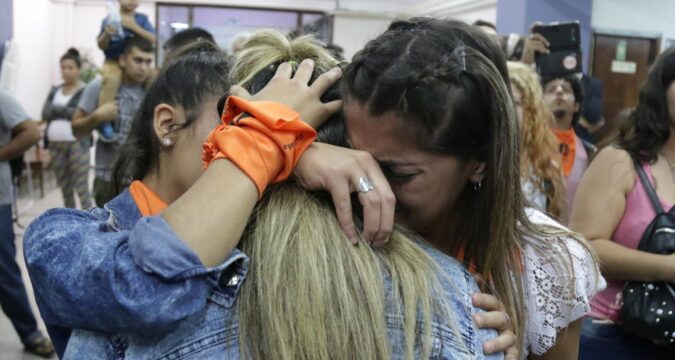
Father Joseba Kamiruaga Mieza CMF
The wounds caused by abuse within the Church are among the most painful and complex challenges faced by the Christian community today. These wounds extend far beyond the immediate victims, touching families, parishes, and the credibility of the Church’s mission. They strike at the heart of the Body of Christ, where trust and faith are meant to flourish.
Abuse in the Church is not confined to a single form or incident. It includes abuse of power, abuse of conscience, and abuse of spirituality—each a profound violation of human dignity. Such abuses occur precisely in spaces meant to safeguard the vulnerable: in pastoral relationships, spiritual guidance, and communities of faith. They take root in the soil of trust, which, when distorted, becomes a weapon of control.
Fragility of trust
Trust is one of the most sacred elements of human relationships. Within the Church, trust in leaders, guides, and institutions carries an even deeper dimension, because it is often linked to the search for God. Abuse often arises in precisely these trust-filled relationships, where a person opens their conscience and life to another with the expectation of care, understanding, and respect.
When trust is manipulated, the result is devastating. The very foundation that should foster growth and freedom becomes a means of domination. Abuse, therefore, is not merely a personal failure of morality. It is the misuse of sacred trust and authority, given by God to be exercised as service but twisted into a form of control.
Abuse in the Church is not confined to a single form or incident. It includes abuse of power, abuse of conscience, and abuse of spirituality—each a profound violation of human dignity. Such abuses occur precisely in spaces meant to safeguard the vulnerable
The many faces of abuse
While sexual abuse has drawn significant public attention, it is essential to recognise other dimensions. Abuse of conscience occurs when leaders exploit their position to intrude into the most intimate space of human freedom—the conscience itself. This manipulation undermines the victim’s ability to judge and choose freely, reshaping beliefs and decisions under the pressure of external authority.
Even more invasive is spiritual abuse, where the name of God is used as a tool for control. Instead of guiding believers into the freedom of Christ, the abuser positions themselves between God and the individual, claiming to speak with divine authority. In such cases, dependence, fear, and submission replace trust, joy, and authentic faith.
The spiritual consequences are profound. Victims may experience a distorted image of God, associating his presence with fear rather than love. Many withdraw from the sacraments, the community, or even the faith itself, unable to reconcile their suffering with the God they sought to encounter.
A system that shapes
Abuse rarely occurs in isolation. It grows in systems that either enable or conceal it. Structures, cultures, and attitudes surrounding the abuse often determine whether it is confronted or perpetuated. Too often, concern for reputation outweighs concern for victims. Communities sometimes prioritise defending the institution or protecting clerical authority, rather than acknowledging the wounds of those harmed. Silence becomes a shield for the abuser, while victims are left to suffer alone.
Abuse, therefore, is not merely a personal failure of morality. It is the misuse of sacred trust and authority, given by God to be exercised as service but twisted into a form of control
This systemic dimension is what magnifies the scandal. The Christian message calls for truth, transparency, and solidarity with the suffering, yet systems of denial and cover-up communicate the opposite. The true scandal is not only the abuse itself but the failure to recognise the wounded as neighbours in need of mercy and justice.
The cost of abuse
The impact of abuse stretches across human, social, and spiritual dimensions. It can shatter self-esteem, create emotional dependence, or trigger depression and anxiety. Victims may become isolated from families and communities, leaving behind education, work, and relationships.
On a spiritual level, the damage is even more severe. Abuse often distorts the image of God, making faith feel like a burden or even a punishment. Victims may reject the Church’s rituals and symbols, experiencing unease or even repugnance toward them. For some, the only way to find peace is to leave the faith community altogether. These consequences remind the Church that abuse is never a private matter. It is a wound to the entire Body of Christ.
Misused authority
Abusive leaders often present themselves as charismatic figures. They may claim spiritual gifts, cultivate exclusive groups, and offer visions of authenticity that appear radical but are detached from true ecclesial communion. Their influence grows through admiration and fear, while their immaturity and self-centredness remain hidden.
Abuse often distorts the image of God, making faith feel like a burden or even a punishment. Victims may reject the Church’s rituals and symbols, experiencing unease or even repugnance toward them. For some, the only way to find peace is to leave the faith community altogether
In such dynamics, the abuser gradually replaces God, eroding the freedom of conscience. Rules, rituals, and even language codes are imposed, creating an environment where individual growth and discernment are stifled. Believers may come to equate obedience to a leader with obedience to God, blurring the line between divine authority and human manipulation. This is not only the fault of individuals but of the systems that elevate leaders without accountability, sacralising their authority and isolating them from scrutiny.
The need for cultural change
Confronting abuse requires more than policies or procedures. It calls for cultural change within the Church.
A culture of humility is necessary, where mistakes are acknowledged rather than hidden. A culture of shared responsibility must replace excessive centralisation of power. A culture of listening must ensure that the voices of victims are heard, believed, and supported with justice. And above all, a culture centered on Christ must guard against any leader or system taking His place in the conscience of believers.
The Church must embrace a culture of truth and compassion. Truth requires transparency and accountability, so that abuse cannot be concealed. Compassion demands solidarity with the wounded, walking alongside them in their journey of healing. Without truth, there can be no freedom; without compassion, there can be no healing.
A culture of humility is necessary, where mistakes are acknowledged rather than hidden. A culture of shared responsibility must replace excessive centralisation of power. A culture of listening must ensure that the voices of victims are heard, believed, and supported with justice
The call of the gospel
The gospel offers clear direction. The parable of the Good Samaritan challenges believers to see the wounded and respond with mercy, even when it is costly. Christ himself identifies with the vulnerable and the abused: “Whatever you did for one of the least of these brothers and sisters of mine, you did for me” [Matthew 25:40].
Abuse in the Church is not simply a matter of institutional failure. It is a betrayal of the gospel itself. Each act of abuse contradicts the mission of Christ, who came not to be served but to serve, and to give His life as a ransom for many.
Toward healing and renewal
The path forward is demanding but necessary. It involves dismantling systems that enable abuse, cultivating vigilance, and strengthening accountability. It requires forming leaders in true servant leadership, not in the exercise of domination. It also means standing with victims—not as an afterthought, but as a central expression of fidelity to Christ.
Authority must be exercised as service, trust must be safeguarded as sacred, and the wounded must find in the Church a place of healing
Healing is possible. Even in the darkest experiences, God’s love remains constant. Abuse may distort the image of God, but it cannot erase his presence. The task of the Church is to reflect that presence faithfully, ensuring that his name is never again used as a tool of harm.
Conclusion
The question before the Church is profound: what kind of community will it choose to be? A community that hides wounds, or one that brings them into the light? A community that defends reputation, or one that defends the dignity of the vulnerable?
The only faithful choice is the latter. Authority must be exercised as service, trust must be safeguarded as sacred, and the wounded must find in the Church a place of healing. Only then will the Church truly reflect the face of Christ, the Good Shepherd, who lays down his life for his sheep.



